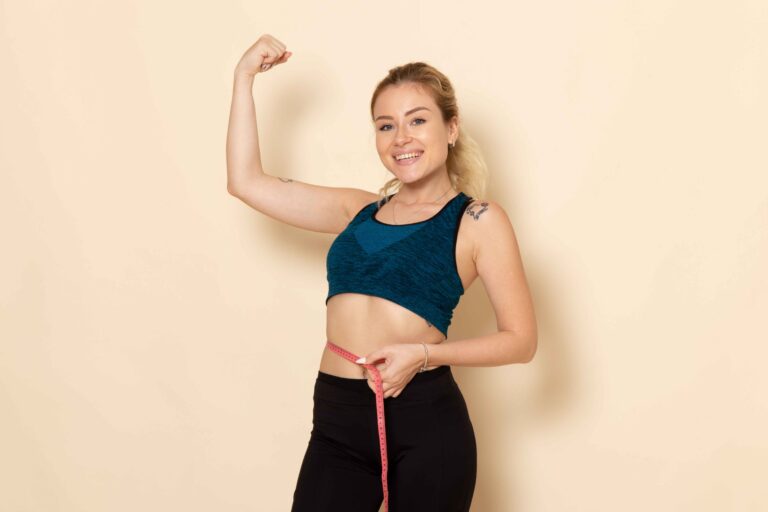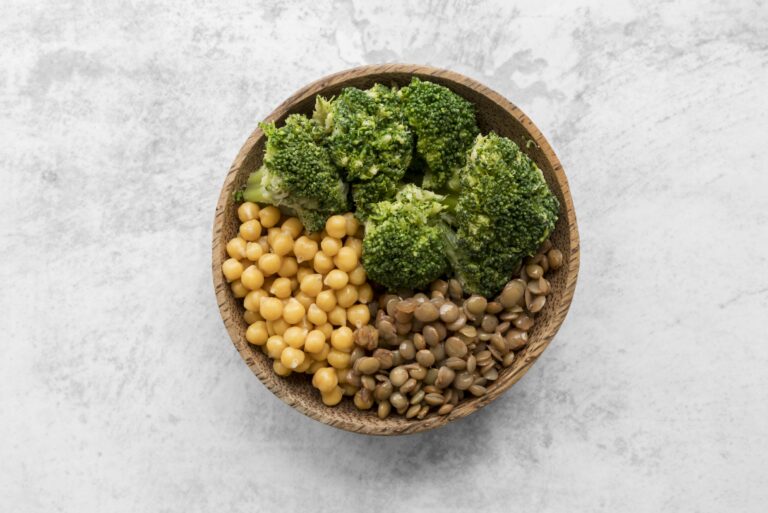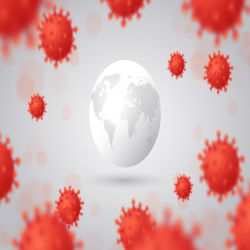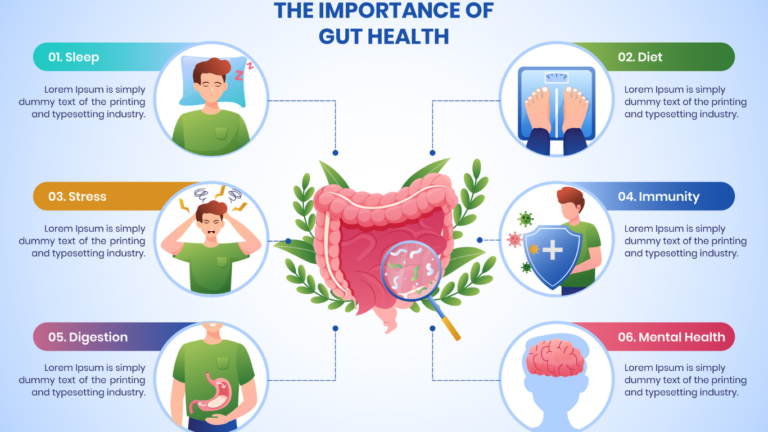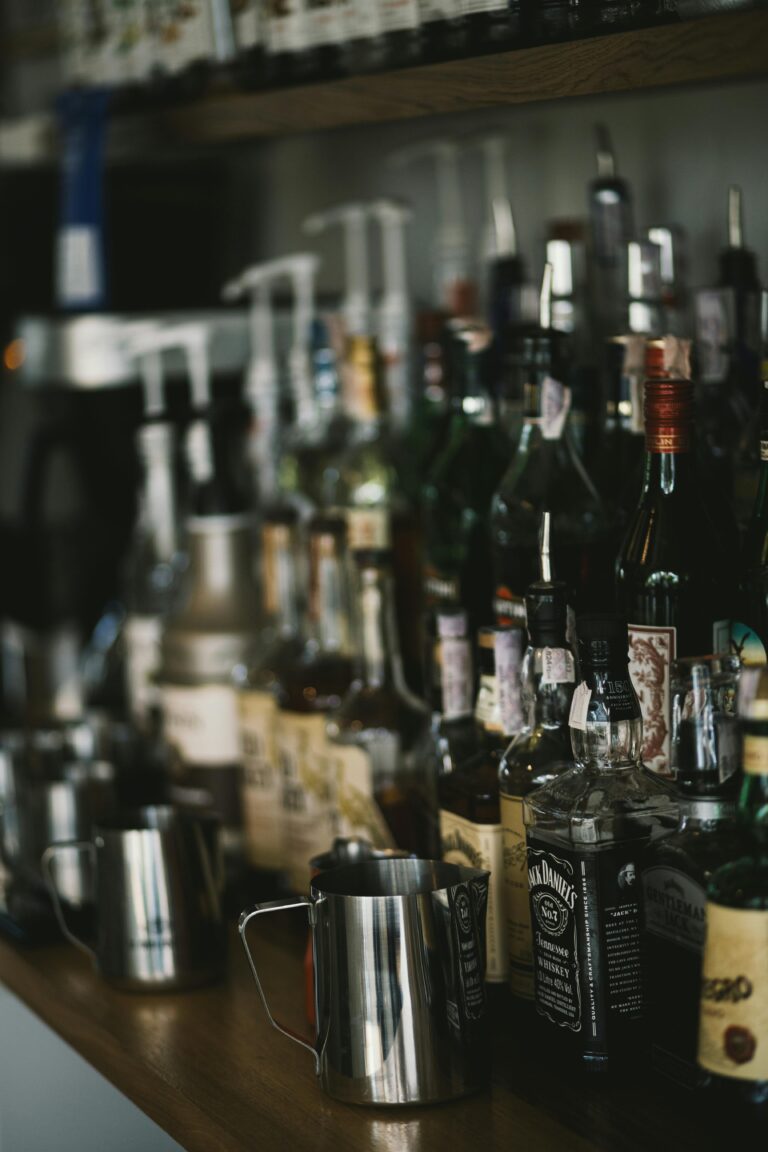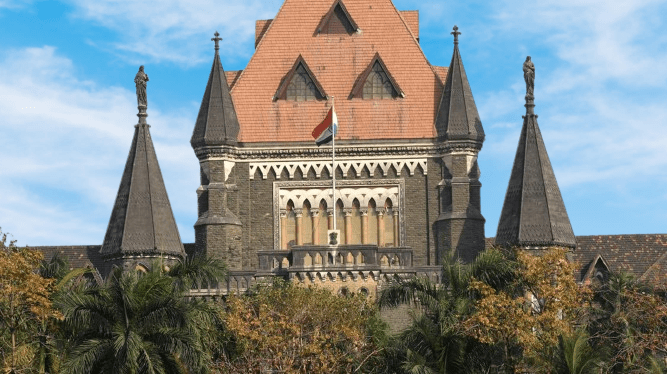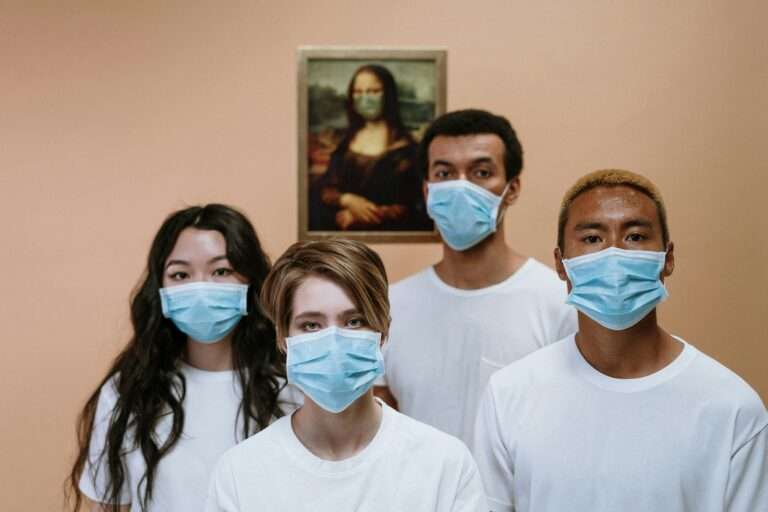Introduction:
Acne: Types, Face Map, Treatments, and Diet Tips for Clear Skin
Acne, also called acne vulgaris (AV), is a common skin problem that affects over 85% of young people worldwide. It is the most common skin condition and often starts during puberty, getting worse during the teenage years.
However, studies show that acne can happen at any age. This long-term skin condition occurs when hair follicles get clogged with oil and dead skin cells. It leads to blackheads, whiteheads, pimples, oily skin, and sometimes scars.
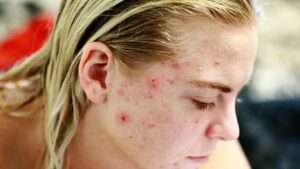
image: Pimples
Science behind That:
The sebaceous gland (SG) is an important part of the skin. It produces most of the skin’s natural oils. These oils help keep the skin healthy. However, the sebaceous gland is also a key factor in acne.
If the oil (sebum) blocks the pores by mixing with dead skin cells, it can cause clogged pores. This blockage can lead to the formation of pimples and acne.
Types of Acne
Non-inflammatory Acne
- Blackheads – These appear black and rise to the skin’s surface. The black color is not due to dirt but is caused by a protein called keratin reacting with oxygen.
- Whiteheads – These are very small and stay under the skin’s surface.
Inflammatory Acne
There are different types of inflammatory acne:
Pustules – These are papules filled with pus due to infection.
- Nodules – These are hard lumps that can be red or skin-colored and often feel sore.
- Papules – Small, pink pimples that are painful to touch.
- Cysts – Cysts form deep under the skin and are more severe than regular pimples. They are painful and result from blocked pores.
Difference Between acne and pimples:
Acne
- Acne is a common skin issue that causes different types of spots on the skin, such as blackheads, whiteheads, and pimples.
- It happens when hair follicles get blocked with oil and dead skin cells.
- Symptoms include red marks, swelling, and sore skin.
- Acne can appear on the face, chest, shoulders, upper back, and neck.
- It is caused by hormonal changes, too much oil on the skin, and genetics.
Pimples
- Pimples are one type of acne that looks like small, swollen bumps on the skin.
- Symptoms include redness, swelling, and tenderness.
- Pimples can be whiteheads, blackheads, or filled with pus.
- They can be painful, especially if touched or squeezed.
- Pimples can affect people of all ages, including teenagers and adults.
Acne Symptoms and Causes
Acne can appear on different parts of the body, including the face, back, neck, chest, and shoulders. People with acne often have whiteheads or blackheads. Below are some common factors that can affect the development of acne:
- Pimples (Folliculitis): These are caused by inflamed hair follicles and can appear on areas like the stomach, buttocks, or legs. If they don’t heal naturally, doctors may recommend antibiotics (oral or topical).
- Hormonal Changes: Hormone levels, especially during menstruation, can fluctuate and trigger acne.
- Diet: Eating unhealthy foods like pizza, fried foods, and junk food may not directly cause acne but can affect your overall health.
- Over-Cleansing: Washing your face too much can dry out and irritate your skin, making acne worse. Use a gentle cleanser instead.
- Accessories: Items like chin straps, collars, and helmet pads can irritate the skin and make acne worse for some people.
- Medications: Certain drugs, like steroids (Prednisone, Deltasone), or those containing iodides and bromides, can cause or worsen acne.
- Cosmetics: Some makeup and skincare products can block pores. Water-based products are better for people with acne-prone skin.
Grade and Severity of Acne
Grade I – Mild Acne
- Includes blackheads and whiteheads (open and closed comedones) with a few small red bumps (papules) or pus-filled spots (pustules).
- Blackheads form when skin oil (sebum) plugs the hair follicles and stays on the surface.
- Whiteheads form when keratin and oil block the follicle under the skin.
- Mild acne means having only a few small pimples.
Grade II – Moderate Acne
- Includes small, red, inflamed bumps called papules, and yellow pus-filled spots called pustules.
- These pimples often appear with redness on the skin.
Grade III – Moderately Severe Acne
- Includes many papules, pustules, and inflamed nodules (larger, painful bumps) on areas like the chest and back.
Grade IV – Severe Acne
- Severe acne covers the skin with numerous papules, pustules, and other inflamed spots. It is more widespread and can be very painful.
Understanding Acne Prevention: Diet, Lifestyle, and Treatment Options
- Acne vulgaris, a common skin condition, can be influenced by various factors, including diet, lifestyle, and topical treatments. Here’s an easy-to-understand guide to preventing and managing acne.
Diet and Acne
Milk and Dairy Products
Some studies suggest that dairy products, such as milk and cheese, might be linked to acne outbreaks. While research is still ongoing, reducing dairy intake may help decrease the severity of acne.
Specifically, meals with high glycemic indices (like sugary foods) can also trigger acne flare-ups. Additionally, foods rich in iodine may cause acne to appear quickly, with numerous small bumps on the skin.
Chocolate
Eating chocolate might worsen acne for some people. Studies show that when blood cells were exposed to Propionibacterium acnes (the bacteria linked to acne), chocolate consumption led to higher levels of inflammation in the body.
Inflammation plays a key role in acne development, so reducing chocolate intake could potentially help prevent flare-ups.
Dietary Fiber
Eating a diet high in fiber helps the body eliminate toxins and excess hormones, both of which can contribute to acne. Fiber-rich foods like fruits, vegetables, oats, beans, and lentils can promote better skin health.
Fiber helps regulate bile acids and supports gut health, which may indirectly benefit your skin.
Antioxidants
Antioxidants are essential for fighting skin inflammation. Acne patients tend to have lower antioxidant levels and higher levels of oxidative stress, which can make acne worse.
Including more antioxidant-rich foods, like fruits and vegetables, in your diet can help improve your skin’s appearance.

image: Green vegetables for acne
Lifestyle Tips for Acne Prevention
Frequent Cleansing and Sun Protection
Washing your face regularly can help reduce acne by removing dirt and excess oil. However, be cautious not to over-wash your skin, as this can cause dryness, leading the body to produce even more oil.
Also, using a gentle cleanser and sunscreen can protect your skin from further irritation and damage.
Avoiding Stress and Tobacco
Stress can increase hormone levels in your body, which might trigger acne breakouts. Additionally, smoking can worsen acne by stimulating sebaceous glands, which produce more oil on the skin’s surface. Avoiding stress and quitting smoking can improve your skin’s condition.
Topical Treatments for Acne
Benzoyl Peroxide
Benzoyl peroxide is one of the most popular topical treatments for acne. It works by reducing acne-causing bacteria and calming inflammation. It’s effective in treating inflammatory acne but can be harsh on the skin, so it’s best used in moderate amounts. Often, it’s combined with other acne treatments for better results.
Clindamycin
Clindamycin is another topical treatment that can be applied directly to acne. It helps reduce inflammation and kills acne-causing bacteria. It’s commonly combined with other acne treatments, such as retinoids, for enhanced effectiveness. Side effects may include dryness and irritation, but it is generally safe for long-term use.
Acetyl Coenzyme A Carboxylase Inhibitor (OG)
A newer option for acne treatment is Olumacostat Glasaretil (OG), which targets the production of fatty acids in sebaceous glands. By reducing excess oil production, OG helps prevent acne from forming. Research on its effectiveness is still ongoing, but early results are promising.
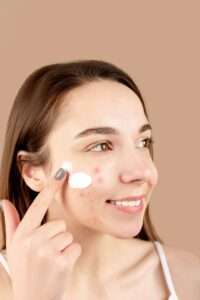
image: Treatments for Acne
Oral Medications and Hormonal Treatments
Oral Antibiotics
For more severe cases of acne, oral antibiotics like tetracycline and doxycycline may be prescribed. These antibiotics reduce the number of acne-causing bacteria and help control inflammation. However, long-term use can lead to antibiotic resistance, so they are typically used as a second-line treatment.
Oral Contraceptive Pills (OCPs)
For females, hormonal therapies, such as birth control pills, can help regulate hormones that trigger acne. Pills containing a combination of estrogen and progestin are often prescribed to improve skin condition by balancing hormone levels.
Conclusion
Acne prevention involves a combination of healthy diet choices, effective skincare routines, and appropriate treatments. By managing factors such as diet, stress, and using the right medications, you can reduce the likelihood of acne flare-ups. Always consult with a dermatologist to find the most suitable acne treatment for your skin type.
Reference:

